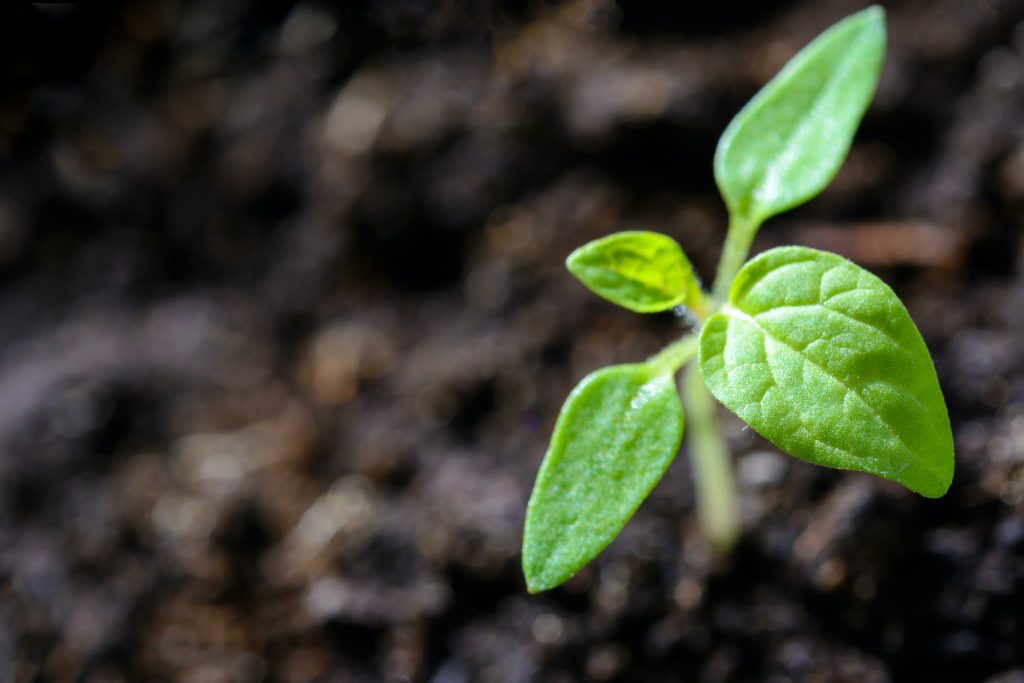
The Crisis Facing Us Today
Over the last two decades, the term “climate change” has gone from near obscurity to a common household phrase, and there is good reason. As people watch weather patterns change and grow more extreme, it becomes harder and harder to overlook increasingly severe droughts, storms, and wildfires. However, while climate change and its effects are daily news, another related challenge–soil health–has remained, until recently, alarmingly obscure.
Climate Change and Soil
As is well known, the emission of greenhouse gasses is a significant cause of climate change. Notably, global carbon emission from fossil fuels has multiplied 10 times in the past 100 years, and unfortunately, the agricultural industries have been responsible for up to one third of those emissions. Poor soil management has been one significant factor causing these emissions. Next to the ocean, soil is the largest carbon sink on the planet, but industrial farming techniques both release stored carbon from the soil and reduce the capacity of soil to store carbon at all.
These practices, if they continue unabated, can lead to desertification of soil, which means essentially the destruction of an absolutely fundamental source of life on this planet. In simple terms, desertification occurs when fertile land is stripped of its organic content due to drought, deforestation or inappropriate agricultural practices. Widespread desertification can lead to many problems, ranging from global food insecurity to increased spread of infectious diseases.
Fortunately, the crucial role soil plays in storing carbon, and thus the potential of soil to mitigate climate change, has been gaining attention in recent months for both lay people and the global science community.
Soil as a Solution to the Crisis
As noted above, modern agricultural practices have exacerbated the emission of carbon into the atmosphere. But these patterns can be reversed. Storing carbon in top soil, in conjunction with other efforts, can be a way to mitigate the rise in atmospheric temperature and limit global warming. This would require adoption of good agricultural practices which would increase organic content in the soil, which would also lead to improved plant health, soil health, food quality and an overall better ecosystem.
Some agricultural practices which can increase soil organic carbon content include agroforestry methods, which involve integration of trees and shrubs into crop and animal farming systems to create environmental, economic and social benefits. Secondly, upon harvest, farmers can leave more of the residue–parts of the plant that are not harvested for food–from the previous crop. Crop residues can improve soil structure, increase organic matter content in the soil, reduce evaporation and retain carbon. Farmers can also rely more heavily on compost,which helps plant growth by balancing soil density.
Sustaining increased carbon content in the soil would require collaboration between farmers, governments and scientists to ensure the solutions are long-term oriented. While the techniques above can work in virtually any context, every country’s unique geography and climate is bound to need its own customized approaches and solutions. For more information on these ideas and how you can support efforts to SaveSoil, visit SaveSoil.org and explore the Resources pages.
Save Soil Movement
Agriculture and forestry can be important realms for mitigating climate change, as they have the capacity of storing large quantities of carbon in the biophysical. The potential for carbon sequestration through regenerative agricultural practices is promising, though the implementation of such practices comes with different social, economic and other caveats.
Listen to Sadhguru emphasize the importance of soil and how it should have organic content between 3% to 6% and how we should maintain the essential ecological balance between soil, animals, and trees to ensure soil plays the role of being a carbon sink. He mentions the need to raise awareness amongst all people to put focus on this hugely important aspect of our environment.
The most prominent carbon sequestration initiative “4 per 1000”, launched by the French Government at the 21st Meeting of the Conference of Parties to the UN Framework Convention on Climate Change (COP-21), set a global aspirational goal to increase soil organic carbon stock at an annual rate of 0.4% per year (or 4 per 1000) in all land covers/uses, including forests.
Scientists discuss this initiative with Sadhguru in the context of the SaveSoil movement in an engrossing and educational discussion[2].
The SaveSoil movement builds on the experience of Sadhguru and Isha Foundation over many decades of implementing large-scale ecological initiatives. The movement has already gained a lot of traction and is supported by numerous organizations including WHO, IUCN and UN SDG Lab. Visit this page for more information on SaveSoil’s many partnerships and endorsements.
Sadhguru emphasizes that “Soil is a living entity and not an inert substance”. How we handle this living entity will play a key role in shaping our climate over the long term.
Attend a free webinar “Meditation for Beginners” to explore a simple yet powerful 12-18 minutes meditation that can bring clarity, health and joy. Visit www.innerengineering.com/freeyoga




